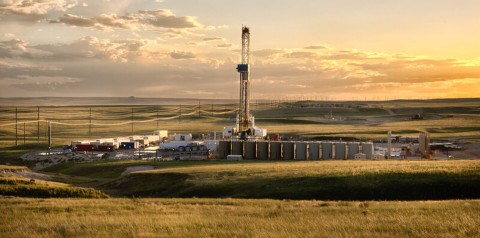Energy firms pulled three rigs from U.S. oil fields this week, the smallest drop in five weeks, data showed on Friday, a sign the collapse in drilling is coming to an end as crude prices recovered after falling 60 percent from last June to March.
It was the 29th straight weekly decline, bringing the total down to 628, the lowest since August 2010, oil services company Baker Hughes Inc said in its closely followed report.
In the latest week, drillers did not add any rigs in the nation’s key shale basins.
Experts expect the rig count to bottom out soon.
“We expect the rig count decline to remain lumpy in the coming weeks and expect to see a few weeks with some rig additions, offset by larger declines in subsequent weeks, before we reach an absolute bottom,” analysts at Evercore ISI, a banking advisory firm, said in a report this week.
The Evercore ISI analysts said that bottom will most likely come early in the third quarter.
U.S. crude oil futures slipped to around $59 a barrel on Friday as the market awaited the outcome of Iranian nuclear talks which could lead to a big increase in Iranian crude exports.
With U.S. crude futures averaging around $60 a barrel since the start of May – up 40 percent from a six-year low in March – several drillers, including most recently WPX Energy Inc in the Bakken, said they plan to return to the well pad due in part to lower drilling costs.
U.S. drillers eliminated thousands of jobs and idled more than half of their oil rigs since the total peaked at a record 1,609 in October in response to a 60 percent fall in crude prices from last June to March.
Prices fell from around $107 a barrel last June to near $42 in March as producers in the United States, the Organization of the Petroleum Exporting Countries and elsewhere continued to pull near record amounts of oil out of the ground despite lackluster world demand.
OPEC has continued to produce oil to retain its market share by driving out more expensive producers like U.S. shale oil drillers and to keep prices low enough to encourage demand growth.
And OPEC’s plan worked, sort of.
U.S. energy firms did slash spending but those cuts have not yet cut into U.S. crude production, which has averaged 9.6 million barrels a day for the past five weeks, its highest level since the early 1970s, according to government data.
Experts, however, do not think U.S. oil output will remain that high for much longer.
“The current rig count is pointing to U.S. production declining slightly sequentially between the second and third quarters of 2015,” analysts at Goldman Sachs, a bank, said this week.
Source: Reuters












